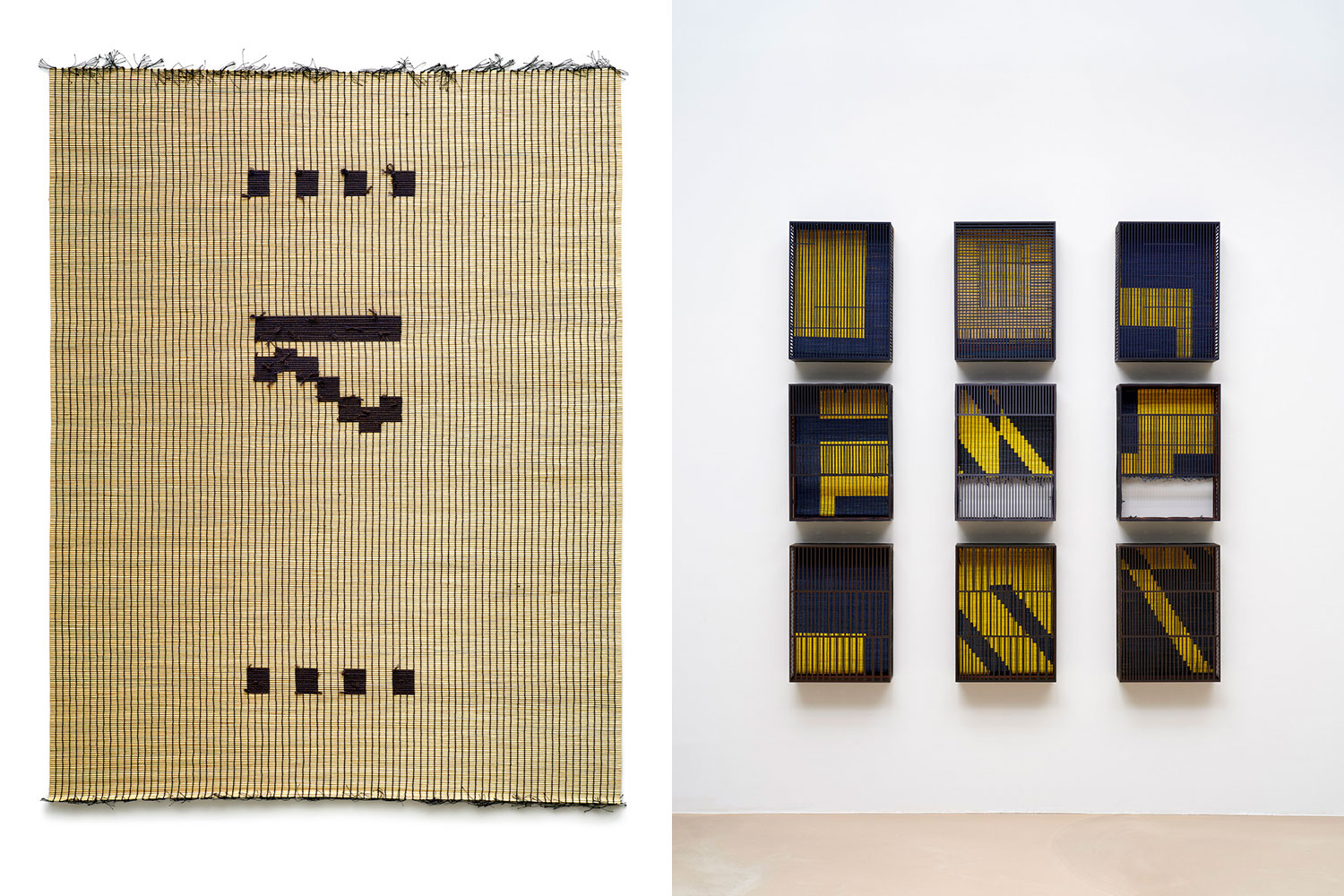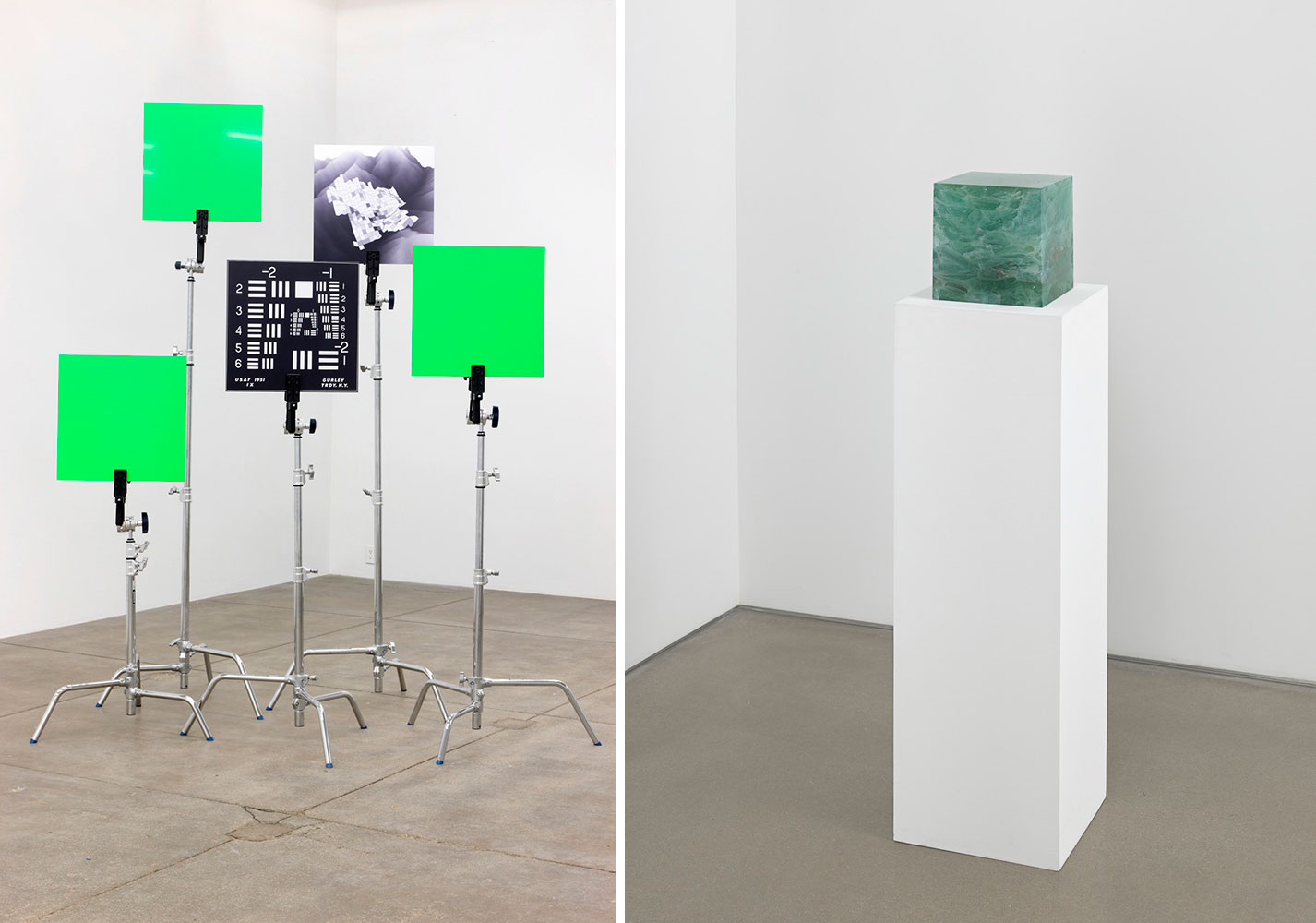ART-PRESENTATION: Hiding in Plain Sight
The group exhibition “Hiding in Plain Sight” looks at the ways in which a wide range of artists from the early 2000s to present day use the language of Minimalism and abstraction to distill complex subjects into forms that reveal new frameworks of meaning, revelation, and resistance for the here and now.
By Dimitris Lempesis
Photo: Pace Gallery Archive
Showcasing a wide range of media as well as outdoor sculpture, the exhibition “Hiding in Plain Sight” examines new modes of abstraction that hold references to specific histories, entities, and contexts within the formal dimensions of the work. Like vessels that carry information from one site to another, the artworks in this exhibition manifest the complexity of modern life in forms that conceal their subject matter through aesthetic intervention. The artists included in the exhibition often begin their work with a process of research that explores subjects from a seemingly disparate range of sources, revealing unexpected narratives and a circuitous web of historic, infrastructural, or geopolitical connections that are often hidden in plain sight. Distilled and abstracted, this information is mapped within the formal and material dimensions of each work, such as the scale, shape, color, or form. Trevor Paglen’s “Trinity Cube” (2017) is deceptively elemental in form, yet on closer inspection its materials speak volumes. The composition of the cube references the irradiated glass of the Fukushima Exclusion Zone in Japan, and trinitite, the mineral created when the United States detonated the world’s first atomic bomb near Alamogordo, New Mexico, in 1945, heating the desert’s surface to the point where it turned sand into a greenish glass. Bringing these materials together in a single form, Paglen’s work maps sublime connections between two distant sites of disaster and discovery, surveillance and control. Similarly, Rayyane Tabet’s “Steel Rings” (2013- ), installed on the second-floor terrace of the gallery, evokes the language of Minimalism; however, the object functions as a surrogate for a specific place, time, and corporate entity. Replicating the steel rings of the Trans-Arabian Pipeline, a form of infrastructure shaped by the borders of five political entities across the Middle East, each steel ring is the same diameter and thickness of the original pipeline, engraved with the distance from the pipe’s source and its corresponding geographic coordinates, and representing a single kilometer in the 1213 kilometers of the pipeline’s convoluted journey through fraught geopolitical territories. Kapwani Kiwanga’s exploration of color in her series “Linear Paintings”, of which four are included in the exhibition, suggests a relationship to the chromatic painting of Imi Knoebel or Blinky Palermo. However, these paintings on drywall depict the two-tone color palettes used in public institutions for specific psychological impacts. Torkwase Dyson’s paintings and sculptures explore the spatial and geometric conditions of extraction in the Anthropocene. Transforming the architectonics of containment and control into planar fields and shapes of resilience delineated by horizon lines, Dyson’s paintings use shape, material and form in ways that reflect the racial conditions of extraction to build a new aesthetic foundation for abstraction. Themes of absence, apparition, and archaeological time are reflected throughout the exhibition. Hito Steyerl’s video installation “How Not to be Seen: A Fucking Didactic Educational .MOV File” (2013) is offering visitors five lessons in invisibility. Examining the circulation of images and the nature of infrastructure in the Information Age, Steyerl’s installation wryly maps formal, symbolic, and real connections between the worlds of art, economics, and global political regimes. Like the invisible systems and transactions in daily life, the works in this exhibition suggest that the practice of distilling and abstracting information in contemporary art echoes the mechanisms of global infrastructural space. In contrast to highways and telephone lines, core infrastructure today, such as broadband internet and global supply chains, is hidden in plain sight, concealing the perpetual circulation of information and goods in its very structure. These artworks similarly carry and conceal information but for different ends. Transcripts hidden within the visual poetics of each work suggest latent modes of resistance, revealing unseen connections buried in the infrastructural space of both the past and present. Embodied in the physical material of the artwork, social and historical events, people, and issues span time and space to create encounters in the here and now. By embracing opacity, as Édouard Glissant has suggested, these works offer an “infinite variety” of poetic landscapes in response—nonlinear, contradictory and active in the creation of new forms of interpretation and meaning.
Participating artists: Etel Adnan, Yto Barrada, Aria Dean, Simon Denny, Torkwase Dyson, Sam Gilliam, Suki Seokyeong Kang, Kapwani Kiwanga, Alicja Kwade, Tony Lewis, Rodney McMillian, Trevor Paglen, Walid Raad, Adrián Villar Rojas, Hito Steyerl, Rayyane Tabet, Jessica Vaughn, and Fred Wilson.
Photo: Trevor Paglen, NSA-Tapped Undersea Cables, North Pacific Ocean, 2016, c-print, 48″ × 72″ (121.9 cm × 182.9 cm) 49-1/8″ × 73-1/8″ (124.8 cm × 185.7 cm), framed
Info: Curator: Andria Hickey, Pqce Gallery, 540 West 25th Street, New York, NY, USA, Duration: 14/7-20/8/2021, Days & Hours: Mon-Fri 10:00-17:00, www.pacegallery.com


![Yto Barrada, La Contrebandière [The Smuggler], 2006, film, video, colour, mute, 10 minutes and 45 seconds](http://www.dreamideamachine.com/web/wp-content/uploads/2021/07/0212.jpg)

Right: Suki Seokyeong Kang, Mat 55 × 40 — Bolds #20-01, 2019-2020, painted steel, woven dyed Hwamunseok, thread, wood frame, brass bolts, leather scraps, 22-7/16″ × 16-9/16″ × 6-5/16″ (57 cm × 42.1 cm × 16 cm), each overall dimensions variable


Right: Trevor Paglen, Trinity Cube, 2017, irradiated glass from Fukushima Exclusion Zone, Trinitite, 8″ × 7-3/4″ × 7-7/8″ (20.3 cm × 19.7 cm × 20 cm)

